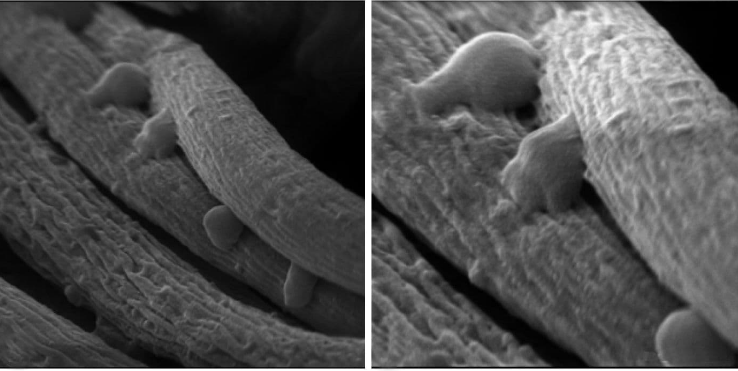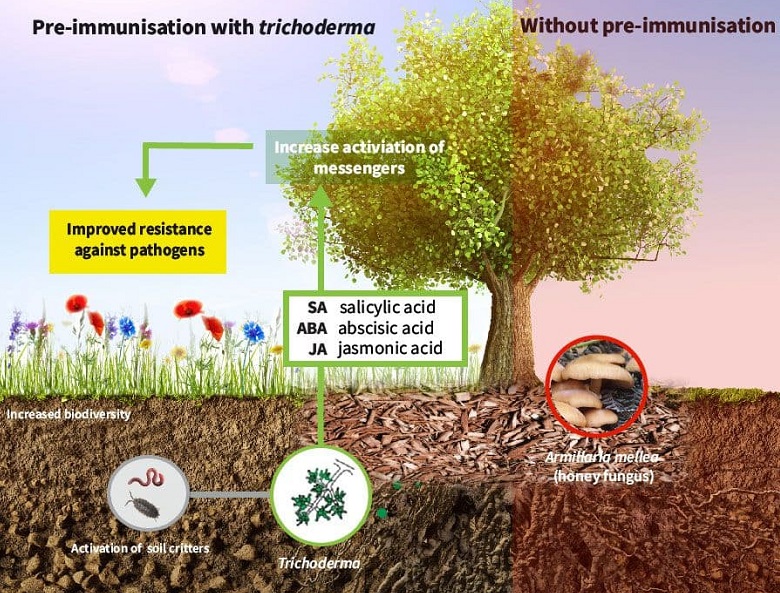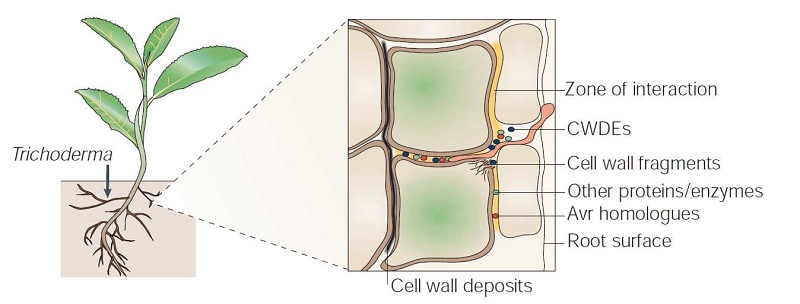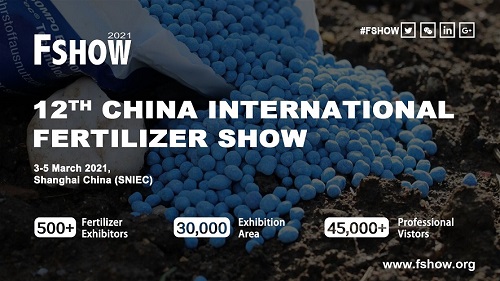
Exhibition time: 17-19 March, 2026 Shanghai, China
 中文
中文

Exhibition time: 17-19 March, 2026 Shanghai, China
 中文
中文
Trichoderma atrobrunneum, the active ingredient of our Avengelus product range can make a significant contribution to improving the vitality of plants and to a healthy soil biology.
Natural antagonist
An antagonist is understood to be a species that competes for space and resources with another species, or strain within a species. Trichoderma atrobrunneum is a natural antagonist to many fungal diseases.
Fast growth
Trichoderma atrobrunneum is characterised by a short life cycle and high growth rates of up to 2 cm/day in ideal conditions. By comparison, the growth rates of basidiomycetes for example (division Basidiomycota, which includes the most common wood decay fungi in trees) usually grow 1 to 2 mm/day and the life cycles range from one to several years.
Efficient use of space and food
Trichoderma atrobrunneum has a high competitive capacity for food and space, as the beneficial fungus can grow quickly and use food sources efficiently. This limits space and other resources to wood decay fungi, which are required for their development.
The optimum temperature for growth and germination is 20-25 °C. The conidia (asexual spores) are pigmented green and can survive under cooler temperatures (such as in winter) by falling into a kind resting state and then germinating again, as soon as the temperatures are warmer (from about 12 °C).
Parasitising beneficial organism
Trichoderma atrobrunneum prefers to remain in the first 20-30 cm of the soil and litter layer, where sufficient nutrients are available. It feeds on dead organic matter, on substances secreted from roots and obtains carbohydrates through parasitism of wood decay fungi. The hyphae of Trichoderma coil around the hyphae of the host (e.g. a decay fungus). Through the secretion of lytic enzymes, the cell walls of the host fungus degrade, while Trichoderma feeds on the cell content.

Supports nutrient uptake and promotes root growth
Trichoderma atrobrunneum not only boosts the resistance of plants in unfavourable environmental conditions, but also increases the availability of nutrients present in the soil. At the same time, various studies have shown that Trichoderma atrobrunneum stimulates the development of new roots, which supports the plant in its absorption of water and nutrients. A higher density of fine roots results in an increased water absorption capacity. In this way, Trichoderma atrobrunneum, when applied at the right time, can contribute to reduced drought stress.
Increases stress tolerance
In times of climate change, plants in our latitudes suffer increasingly from drought stress. Many other stress factors affect the vitality of trees in urban areas. Trees at these locations are often pruned improperly, need to cope with limited space, insufficient nutrient supply, soil compaction, contaminants and microbial imbalance in the soil. Trichoderma atrobrunneum supports plants suffering from these types of stress and can make a valuable contribution to the fields of tree and lawn care, as well as gardening and landscaping.

Pre-immunisation by activation of messenger substances
A plant can not initially distinguish between a symbiont and a pathogen. At first it responds equally to the infection by strengthening the cell walls and producing so-called phytoalexins (antibodies). Trichoderma atrobrunneum establishes a connection with the plant‘s roots and communicate with the plant through signalling that enables the host to accept it as a beneficial organism.
During root establishment, the beneficial fungus (also known as an endophyte) triggers metabolic and genomic changes in this plant. These changes increase the resistance of the host plant to a wide range of plant damaging microorganisms and insects.
Two observations were made regarding this:
(1) Trichoderma atrobrunneum reduced the infestation where Trichoderma atrobrunneum and the pathogen were simultaneously infected,
(2) There was a reduction in infestation when Trichoderma atrobrunneum was infected at different times as well as in different locations like the pathogen. The second response of the plant is also called induced systemic resistance or pre-immunisation.
The pre-immunisation resulting from Trichoderma atrobrunneum is achieved by intensifying the production of messengers (such as salicylic acid and jasmonic acid), which in turn can trigger the production of phytoalexins. However, the phytoalexins are only produced when when a potentially harmful fungus becomes pathogenic.

Above illustration from Harman et al. 2004: Trichoderma is able to grow between the first two cell layers of the host root. Proteins and enzymes stimulate the production of signalling molecules, which are transmitted in the event of a pathogen attack, triggering a defence response in the plant. (Excerpt from Harman, G. E., Howell, C. R., Viterbo, A., Chet, I. & Lorito, M. (2004). Trichoderma species – oppotunistic, avirulent plant symbionts. Nat. Rev. Microbiol. 2, 43–56.)
From MycoSolutions AG
